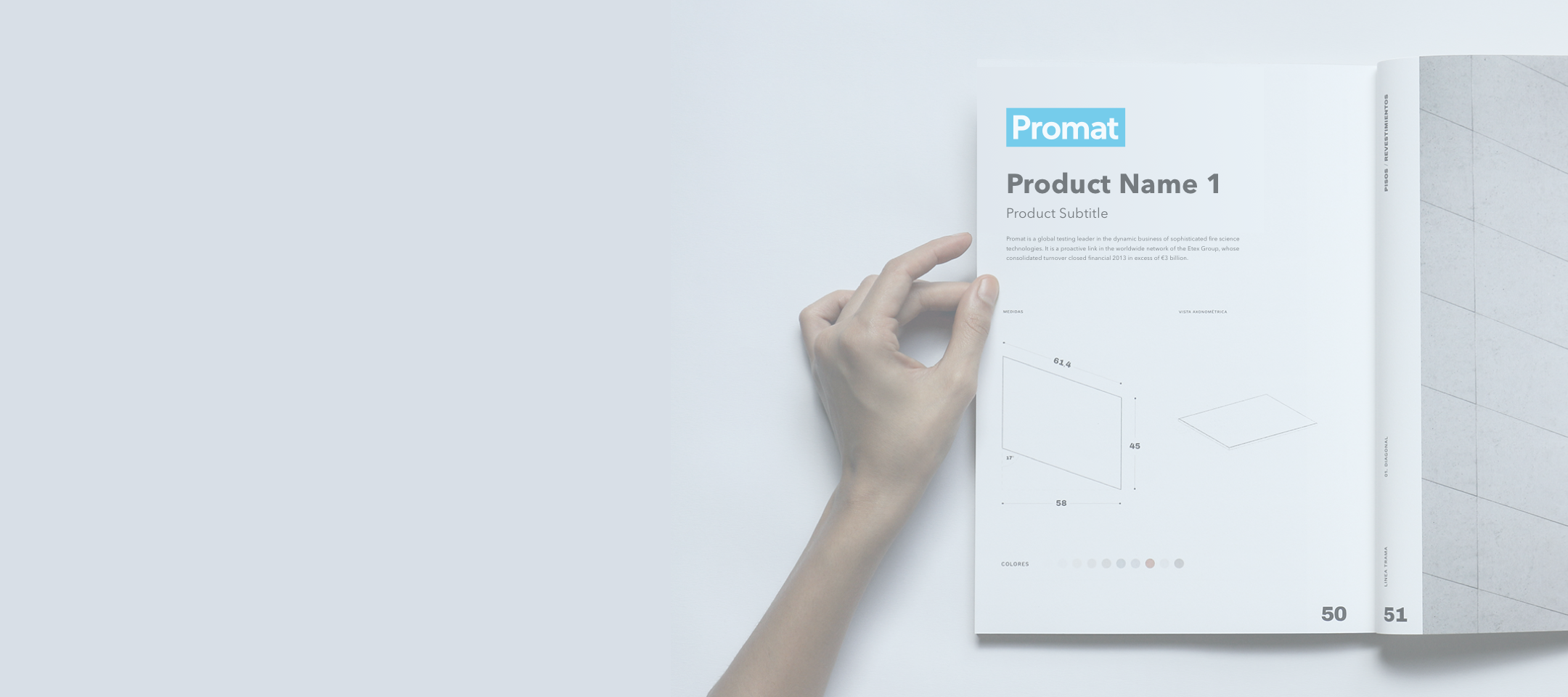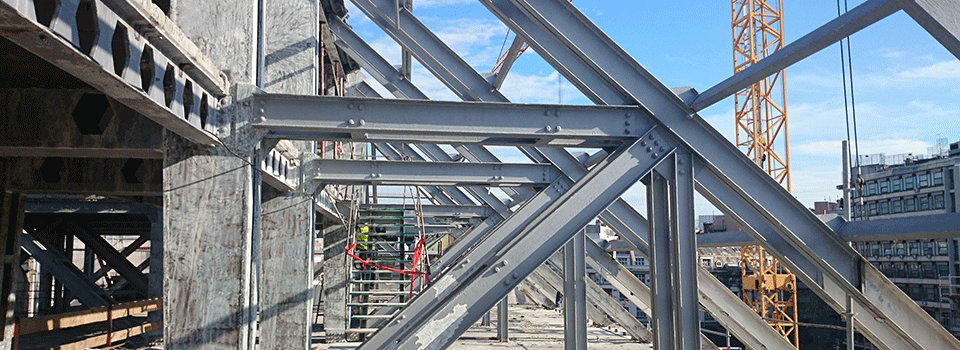
When a fire protection system for a steel structure is selected, the essential question is how to maintain the temperature of steel for a specified time under a certain limit, called critical temperature. When the steel temperature does not exceed the critical temperature, the load-bearing capacity in the fire condition is maintained and deformations are limited. The fire resistance requirement follows from national legislation and depends on the type of building, and is typically expressed in classes like 30, 60, 90, 120, 180 or 240 minutes. In European standards, this is denoted as ‘R30’ , ‘R60’ , etc. The designation ‘R’ ensures the load-bearing capacity of the steel structure for the indicated time period, given in minutes.
Selecting an appropriate system for fire protection of steel structures
Nowadays, there are different solutions available for the fire protection of steel structures.
The following systems are commonly applied:
- Box protection of fire protective boards
- Horizontal and vertical membrane
- Fire protective sprays
- Fire protective intumescent paints
This document serves to give an overview of the considerations for choosing between those systems. As Promat offers all these systems, your local Promat office is well placed to further advise you.
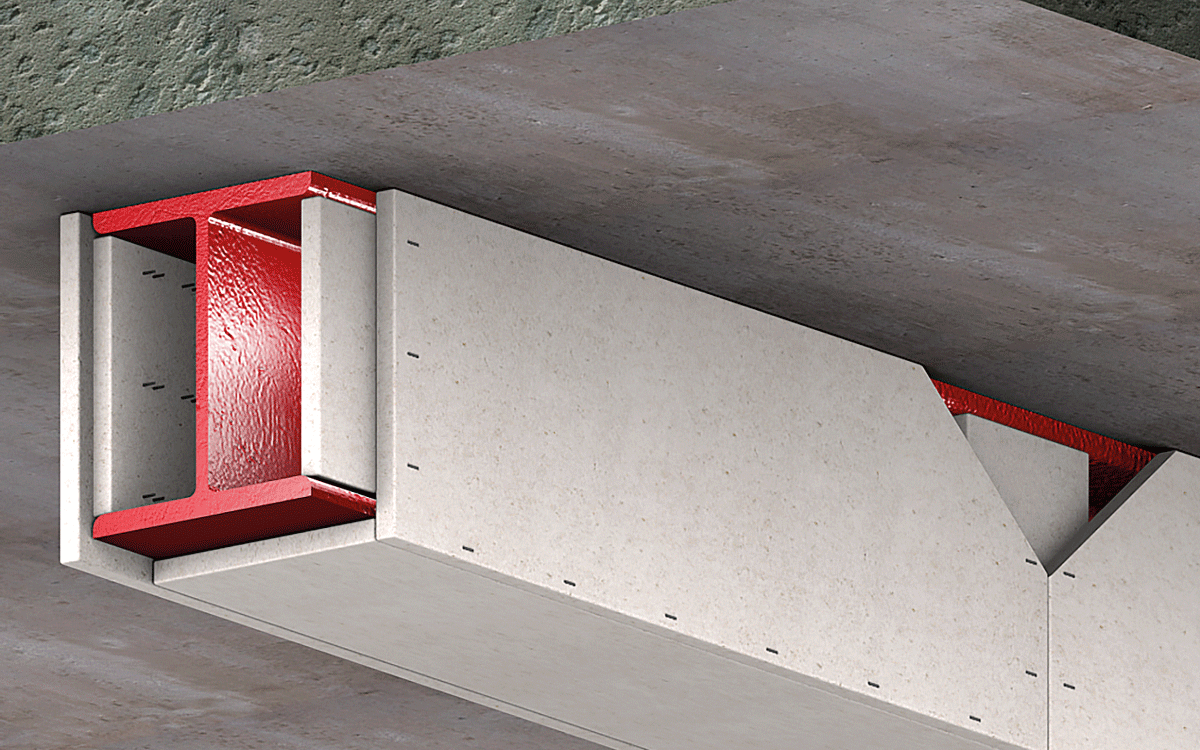
Fire protective boards
Fire protection boards are typically mineral boards (i.e., made of calcium silicate or calcium sulphate) reinforced with fibers and fillers. Apart from offering fire protection, some boards have been further optimised for durability, in particular, resistance against humidity and freeze-thaw. A strong advantage of boards is that they are produced in the controlled environment of the factory, with strict tolerances for relevant properties including thickness.
The installation complexity of different board systems varies greatly. Whereas some boards do not offer much integrity during fire exposure and need extensive supporting constructions (metal rails, clips, screws or glue) and joint treatments (joint filler, joint bands or skimming compound) and often multiple layers, other boards are more resistant and can be directly staple-fixed around the steel section, with (wedge) noggins or, in the case of columns, just a simple box.
Promat boards are all in the latter category: the easiest and fastest to install, causing minimal interaction with other jobsite activities. No application times or waiting times for drying of glue, filler or compound and no need to install metal rails and clips. Moreover, Promat boards have excellent fire performance, which translates into single-layer protection for a wide range of situations. Only for more severe fire requirements, double layers may be needed. The installation of fewer board layers directly translates into a further major saving on installation time. Moreover, having a thinner board system will reduce the total weight of the fire protection system on the structure, and during the installation it will reduce the volume for transport, storage and installation.
It’s important to underline that a simple system is the most reliable because it is easy to inspect the quality of the installation. For example, in a multi-layer board system with metal rails, clips, screws, glue, fillers and compounds, once the final board layer is placed, no one is able to check the correct application of all these items.
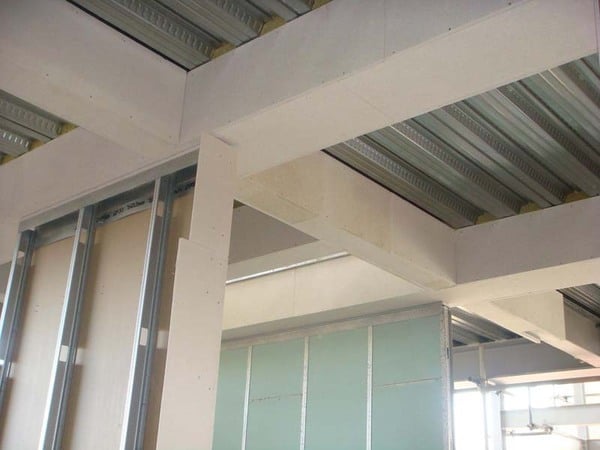
Promat offers different board systems depending on specific requirements regarding durability and mechanical strength. These properties are objectively determined by independent institutes in accordance with EAD’s (European Assessment Documents), the result being an ETA (European Technical Assessment).
The procedures for processing and installation are relatively simple (cutting with a saw, screwing, stapling). As there are hardly any time and temperature limitations, the boards can be applied throughout all seasons.
In addition to direct box protection, Promat also offers board solutions for fire protection membranes. In practice, it can often happen that the cladding of the ceiling structure is too complex because of a complex geometry. In such cases, depending on the given situation, a fire protective membrane can be made. This is especially useful with composite structures or trusses. When a fire protective membrane system is selected, caution is required that the system meet the specific requirements and be, in case of a horizontal membrane, tested in Europe in accordance with EN 13381-1, which ensures the classification of the structural load-bearing capacity (R), or tested in accordance with EN 1365-2, which ensures the load-bearing capacity and also fire resistance integrity and insulation (REI). In specific cases, a protective vertical membrane can also be used (tested in Europe with EN 13381-2). Alternatively, horizontal membranes can be tested according to EN 1364-2. In this test there is no mechanical load on the floor, so the test provides only an EI classification for the membrane itself and no R classification. Nevertheless, the membrane forms a new top boundary of the fire compartment, and therefore the floor above it is automatically protected irrespective of the type of floor structure. Of course, the floor itself must be able to carry the loads, but this is always the case, not only during a fire. So when a floor is protected by a membrane tested according to EN 1364-2, the EI is provided by the membrane and the R by the floor.
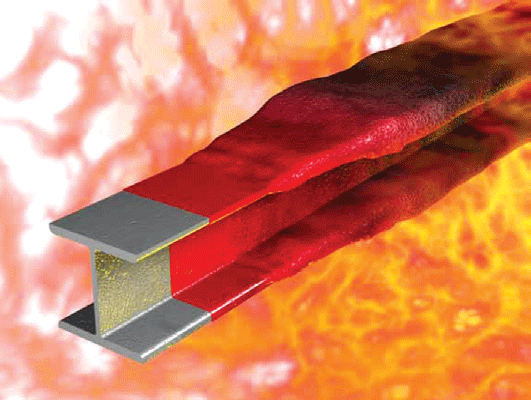
Intumescent paints
Intumescent paints are paints which react to high temperatures. Whereas under normal conditions the paint is a thin dry film, during fire it transforms into a thick layer of carbon foam (typical expansion around 50 x) that provides insulation to the load-bearing structure. Intumescent paints can be water-based or solvent-borne.
Intumescent paints are delivered in pails and are applied by airless spray, roller or brush. Solvent-based paints can be applied in a workshop. Workshop application has the advantage of better controlled application conditions, but the transport of the painted elements to their final position in the building must be done with great care. Currently the water-based intumescent paints are the most widely applied because of health and safety aspects.
Intumescent paints have the aesthetic advantage that they are thin and leave the geometry of the steel structure visible. Moreover, the paints can be overcoated with different finishing products, leaving to the architects a free choice of colours and visual aspects. Another advantage of paints is that they can follow any complex geometry of the structure, also, for example, that of structural nodes (beam or column connections etc.).
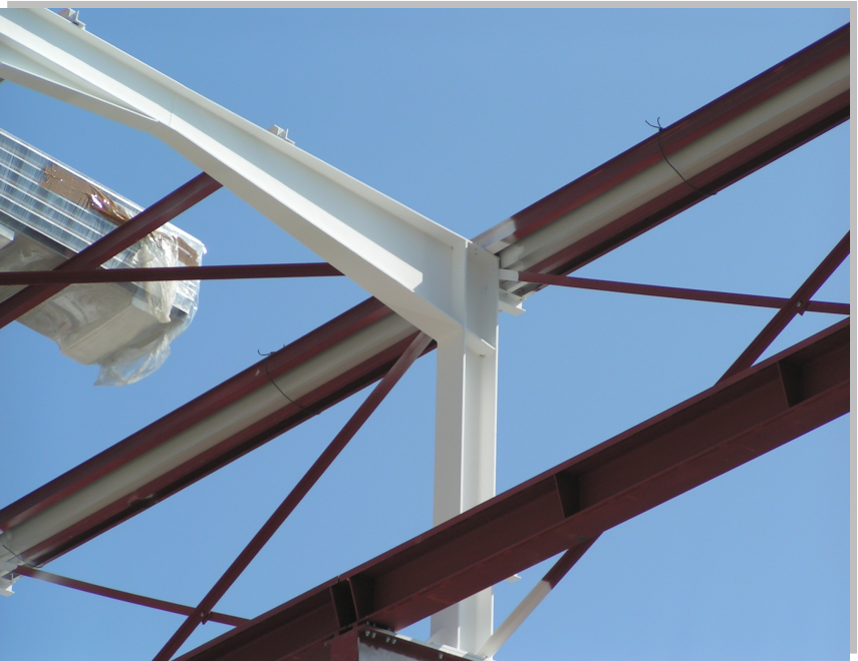
The functionality of an intumescent paint heavily depends on correct application in accordance with manufacturer’s instructions.
Paint application requires some free space around the structure, and sometimes surroundings may need to be masked (by plastic sheets). In addition, it is always necessary to leave a space for the expansion of the paint (a few centimetres); therefore, the protected structures cannot be further covered with slabs, panels or other rigid materials.
The application of paint is restricted to certain ambient and substrate temperatures and relative humidity, which may pose limitations to the application in some seasons. Cleaning and preparation of the substrate are essential for good adhesion. Furthermore, it is important that drying times be observed and drying conditions be controlled. Especially in the case of multiple coats to reach the final thickness, the drying time of each coat is essential for the adhesion between the layers. Finally, extensive thickness checking is needed to ensure that the applied paint thickness meets the requirement. When a paint system is selected, it is important to verify the compatibility of the intumescent paint with the primer and with topcoats that are sometimes needed to meet specific durability requirements.
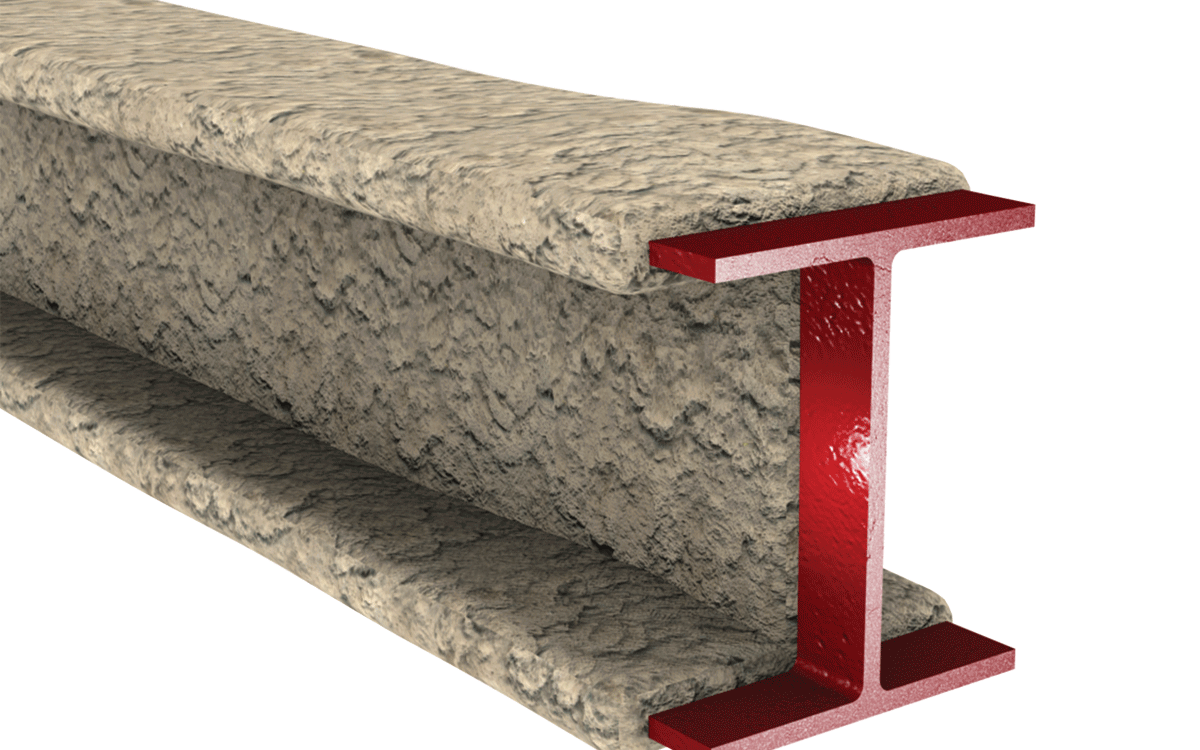
Fire protective sprays
Fire protective sprays typically consist of a binder (normally cement or plaster), fillers and fibres. The spray is delivered to the jobsite in powder form. The powder must be mixed with water to produce a sprayable material. Onsite mixing, pumping and spraying equipment are therefore required. Sprays are particularly suitable for structures where aesthetic requirements are not so important, although a careful application by a professional applicator may even provide an aesthetically pleasing look that is sometimes preferred by architects.
Another advantage of sprays is that they can follow any complex geometry of the structure, also, for example, that of structural nodes (beam or column connections etc.). The functionality of a fire protective spray depends on correct application in accordance with manufacturer’s instructions. Spray application requires free space around the structure, and as overspray is often inevitable, surroundings may need to be masked (by plastic sheets). Spray work is restricted to certain ambient and substrate temperatures and relative humidity, which may pose limitations to the application in some seasons. Cleaning and preparation of the substrate are essential for good adhesion. Furthermore, it is important that drying times and conditions be controlled. Especially in the case of multiple coats to reach the final thickness, the drying time of each coat is essential for the adhesion between the layers. Finally, extensive thickness checking is needed to ensure that the applied spray thickness meets the requirement.

